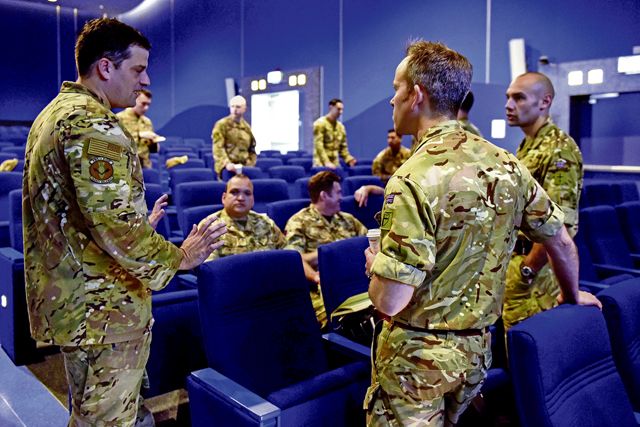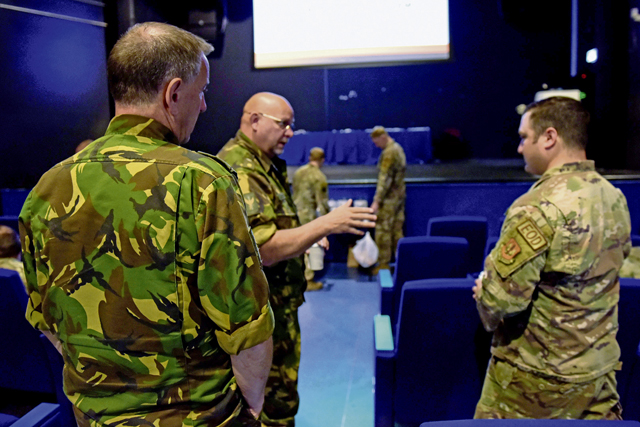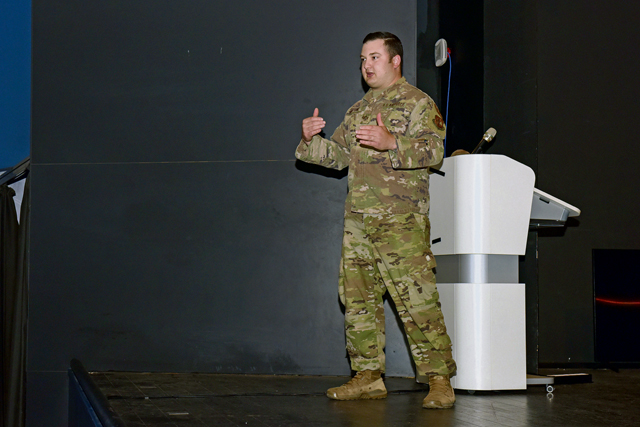
The 786th Civil Engineer Squadron Explosive Ordnance Disposal flight hosted U.S. Air Forces in Europe’s first EOD symposium at Ramstein Air Base, May 19.
Service members from the United Kingdom and the Netherlands attended the symposium to integrate U.S. allied partners and discuss how NATO allies and partners fit into the Air Force’s strategic vision.
Speakers at the joint training event covered topics such as airfield recovery, information warfare, and the Air Force EOD strategic vision 2035.
Since EOD falls under the Civil Engineer Squadron, they are responsible for recovering and assisting in repairing airfields.

EOD contributes to airfield recovery by performing rapid explosive hazard mitigation. They do this by using mechanical and explosive clearance techniques to help remove or dispose of unexploded ordnances on the airfield before CE Airmen come in to repair the flightline.
“I think a big factor that plays in here is our role in the U.S. Air Force in recovering airfields,” said Staff Sgt. Emilio Solis, 786 CES EOD flight supply supervisor. “If there ever is a time where we need support, we can all back each other up.”
Information warfare, an additional focus of the symposium, allows EOD to maintain awareness of emerging threats. It is crucial to understand threat levels, ensuring they are capable of doing their main mission: ensuring explosives in all domains are ready to be cleared.

The Air Force EOD strategic vision 2035’s intended purpose is to share information which is key to staying up-to-date with our joint allies and partners. This reflects U.S. European Command’s second line of effort to strengthen solidarity and unity with allies and partners.
“We are moving forward and we are going to keep working closer to sister services and our NATO allies,” said Staff Sgt. Taylor Lahteine, 435th Construction Training Squadron EOD contingency training instructor. “Being able to understand each other and being able to work together efficiently is very important to us.”


